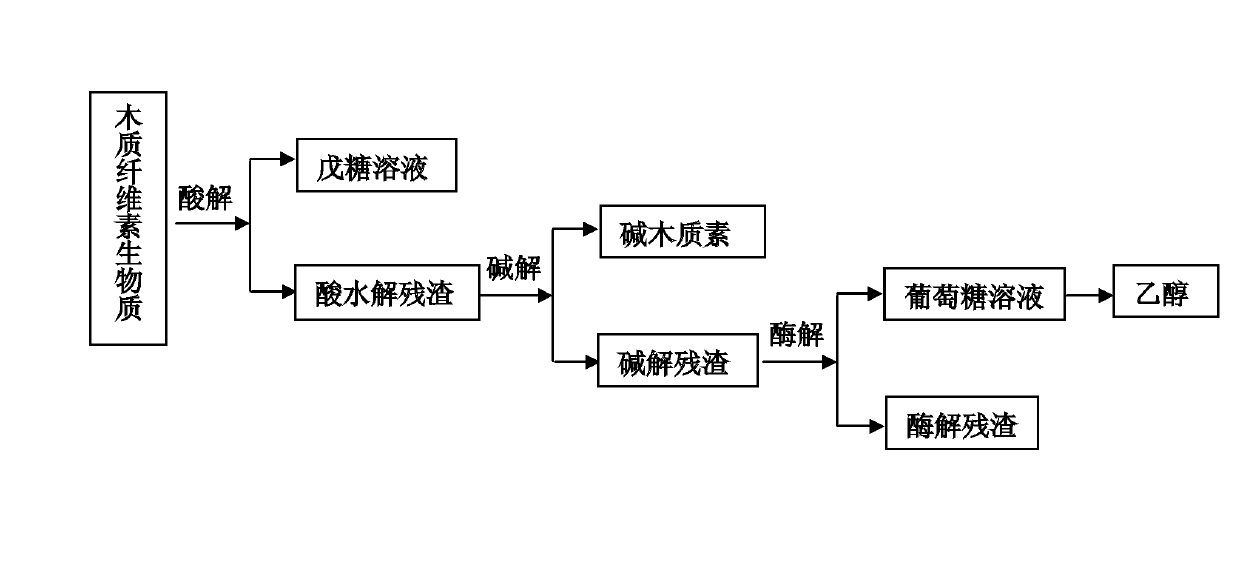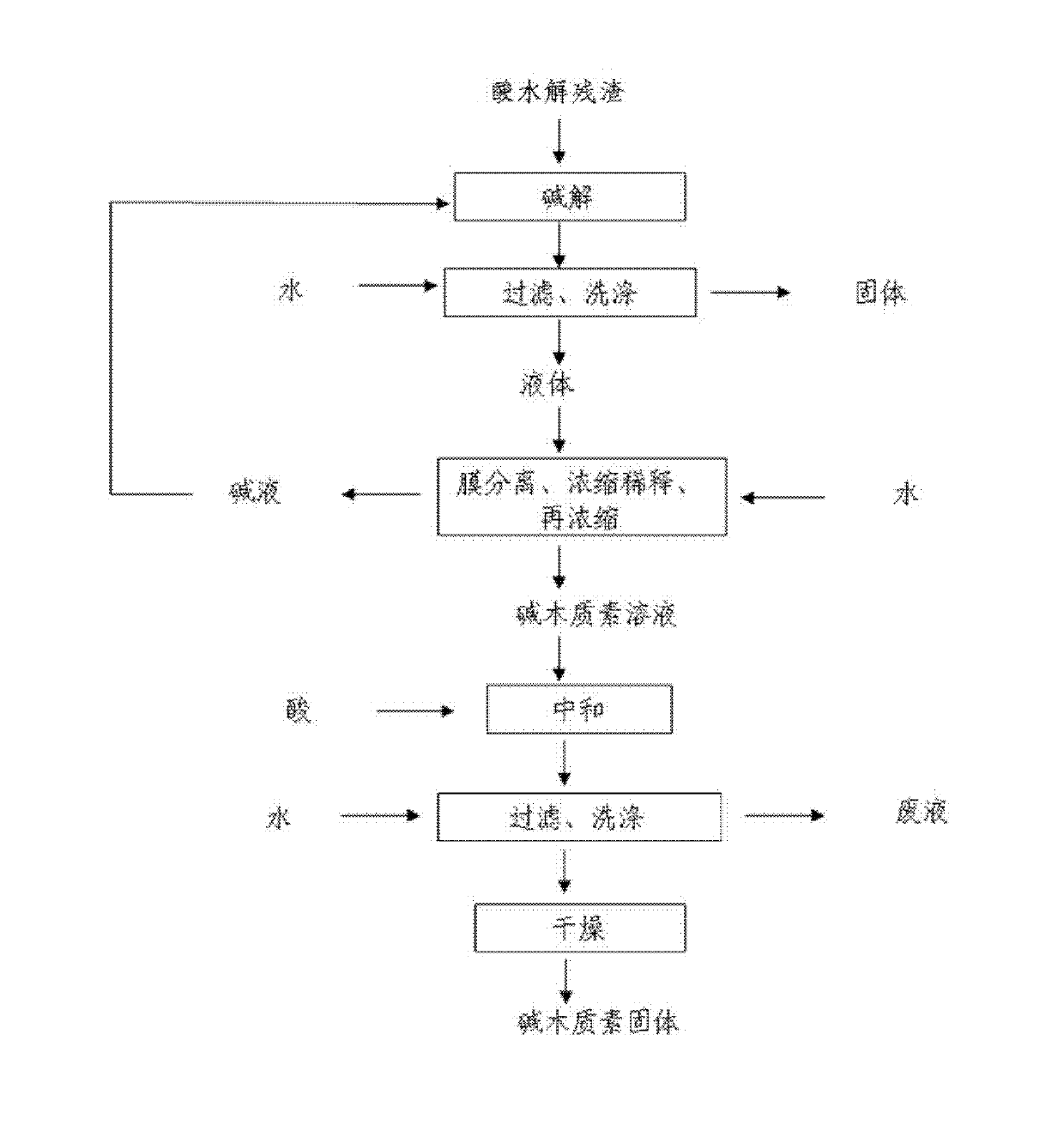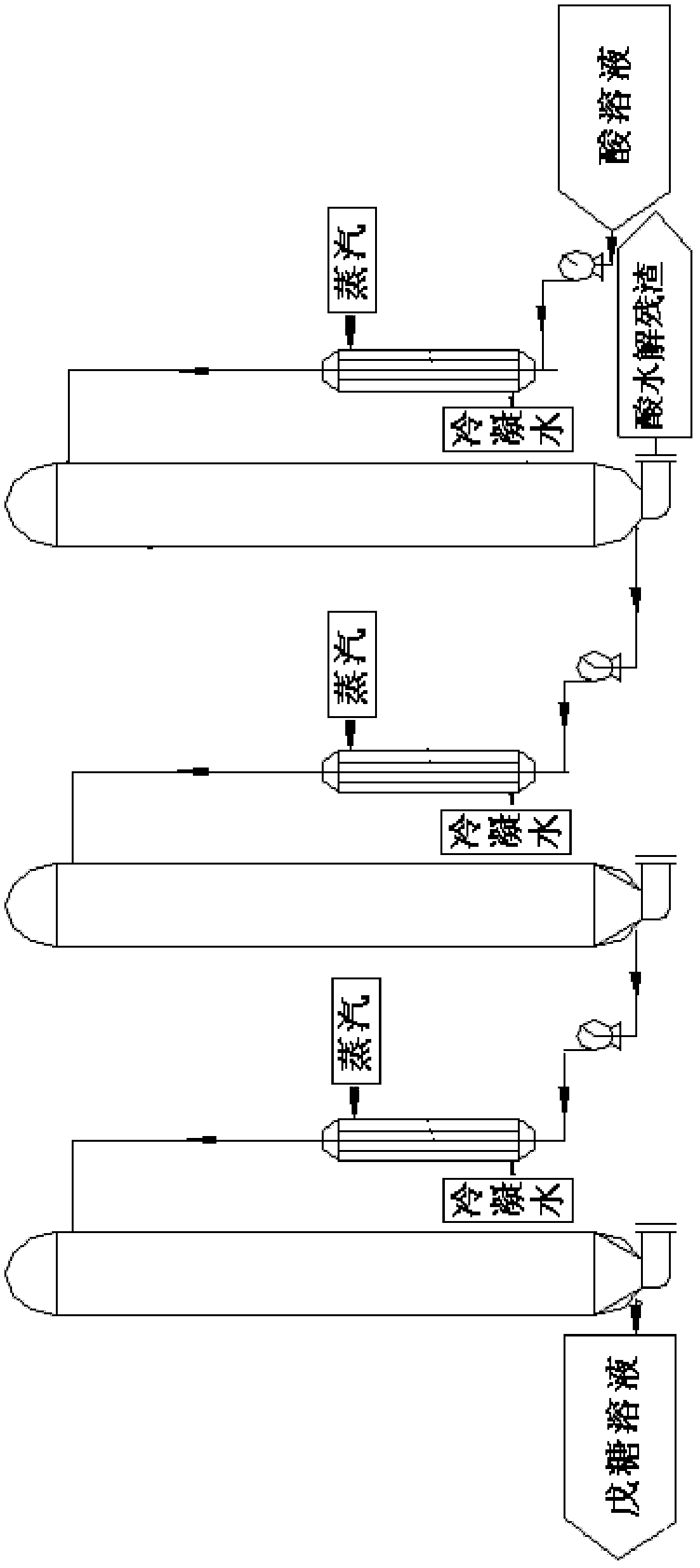Comprehensive utilization method of lignocellulose biomass
A lignocellulose and biomass technology, applied in the field of comprehensive utilization of cellulose, hemicellulose and lignin in lignocellulosic biomass, can solve the problem of not being able to obtain high activity, high hemicellulose and cellulose extraction rate at the same time problems, to achieve the effect of low destruction rate, protection activity, and less equipment investment
- Summary
- Abstract
- Description
- Claims
- Application Information
AI Technical Summary
Problems solved by technology
Method used
Image
Examples
Embodiment 1
[0072] (1) N-level acid hydrolysis
[0073] In the present embodiment: what adopt is tertiary acid hydrolysis, at first corn cob (mass component composition: moisture 6.12%, cellulose 35.19%, hemicellulose 32.1%, lignin 23.7%, other 2.95%, the same below) Crush, wash with water to remove dust. Set the first reactor as the first stage, and the last one as the third stage, add the newly prepared acid solution into the first stage hydrolysis reaction kettle, and add the acid solution discharged from the first stage acid hydrolysis reaction kettle into the second stage In the acid hydrolysis reactor, the acid solution discharged from the second-stage acid hydrolysis reactor is added into the third-stage acid hydrolysis reactor, and the solution discharged from the third-stage acid hydrolysis reactor is the final pentose solution, and then the first-stage acid The acid hydrolysis residue in the hydrolysis reactor is discharged and put into new corncob raw material, which is used a...
Embodiment 2
[0101] (1) N-level acid hydrolysis
[0102] The raw material and method are the same as Example 1 step (1), the difference is that the temperature of the first-stage acid hydrolysis is 135°C, the temperature of the second-stage acid hydrolysis is 120°C, and the temperature of the third-stage acid hydrolysis is 105°C; The weight of acid hydrolysis residue obtained is 1.79×10 3 kg (the water content is about 65%, the absolute dry content of hemicellulose is 8.69%, the absolute dry content of cellulose is 51.9%, and the absolute dry content of lignin is 34.4%), and the final pentose sugar solution is 8.21 × 10 3 kg, and the concentration of pentose sugar is 3.49%, the extraction rate of hemicellulose is 84%.
[0103] (2) Extraction of alkali lignin with alkaline solution
[0104] Mix the acid hydrolysis residue obtained in step (1) of this example with sodium hydroxide solution, wherein the liquid-solid volume ratio is 5:1, and the concentration of sodium hydroxide is 6%, then ...
Embodiment 3
[0114] (1) N-level acid hydrolysis
[0115] Raw material and method are with embodiment 1 step (1), and difference is that the concentration of phosphoric acid solution in every grade of reactor is 15%, and the time of every grade of acid hydrolysis is 2 hours, and the temperature of the first grade of acid hydrolysis is 100 ℃, The temperature of the second-stage acid hydrolysis is 95°C, and the temperature of the third-stage acid hydrolysis is 90°C; the weight of the finally obtained acid hydrolysis residue is 1.83×10 3 kg (the water content is about 65%, the absolute dry content of hemicellulose is 10.65%, the absolute dry content of cellulose is 50.56%, and the absolute dry content of lignin is 33.89%), and the final pentose sugar solution is 8.17 × 10 3 kg, and the concentration of pentose sugar is 3.34%, the extraction rate of hemicellulose is 80%.
[0116] (2) Extraction of alkali lignin with alkaline solution
[0117] All the acid hydrolysis residues obtained in step ...
PUM
 Login to View More
Login to View More Abstract
Description
Claims
Application Information
 Login to View More
Login to View More - R&D
- Intellectual Property
- Life Sciences
- Materials
- Tech Scout
- Unparalleled Data Quality
- Higher Quality Content
- 60% Fewer Hallucinations
Browse by: Latest US Patents, China's latest patents, Technical Efficacy Thesaurus, Application Domain, Technology Topic, Popular Technical Reports.
© 2025 PatSnap. All rights reserved.Legal|Privacy policy|Modern Slavery Act Transparency Statement|Sitemap|About US| Contact US: help@patsnap.com



